
SEO really is as complicated as it seems. It is not something you can learn in a few weeks. No different from anything else. However, there are some things you can do without needing to learn everything, but just with the help of an SEO tool. This is just a fraction of what can be done to improve functionality, but any change, despite how small, will dramatically help reduce issues that are impeding your site from achieving a higher rank in search. Here’s a manual to SEO first aid.
First of all, you’ll need a SEO tool. There were times when everything was done manually. Luckily no one does so now.
If you have a small website Serpstat’s Audit tool will be more than enough to check the whole website for free. If your site is more massive, desktop Netpeak Spider would do. I would say that it’s a tool for more advanced users who need detailed audit. It checks your website for 64 issues according to 53 parameters. I’ll be using online tool Serpstat so that I can do audit right away.
As for other online tools, most heard of are definitely Moz (its crawl test can be used for SEO audit) and SEMrush.
To begin, type your site’s url into a search bar and hit search.
As an example I took a random online shop. Although it has good ranking positions (ranks in top 5 for 41 keywords), has a well-thought design and creates an impression of high-quality website, it still has many omissions in optimisation.
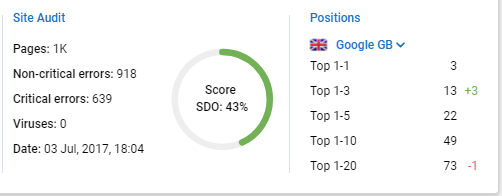
You will get a list of errors that may affect your site’s rankings and usability. When clicking on each group of errors, you’ll find valuable recommendations on how to fix them. Below is a description of the mistakes and a list of pages where it appears.
Missing Description

Serpstat marks meta tag description errors as of a high priority. Make sure you correct them in the first place. Though meta description is not a ranking signal, it’s important because it often determines what people will see in the snippet. That’s why it is crucial to make it attractive and readable. It is recommended to be between 135 to 160 characters long and should not be copying the title tag. The most important keywords should be included. Always keep in mind – description is for people, not for search engines. If appropriate, add call to action and appeal to emotions. Brian Dean advises to look for inspiration in your competitors’ Adwords ads. Using rich snippets reveals even more options to make a better snippet.
This is what’s written in Google Webmaster Central blog about this:
“We use a number of strategies for selecting snippets, and you can control one of them by writing an informative meta description for each URL.
”
Duplicate Description

It’s not recommended to use the same descriptions for multiple pages. In simple words, the description tag is where you are able to tell what is special about each page and all the pages of your site do not have the same content, do they? Make sure there is a match between description and content on the page.
For small sites this should be done manually, but for larger database-driven sites programmatic generation of the descriptions will be an alternative. This is where some spammy descriptions may appear. Make sure you check everything.
Description is too long or too short

If the snippet is too big it will be cut down. That`s why it’s better to give all necessary information in just a couple of sentences.

One more thing to keep in mind when writing a description — social networks use the Description tag to create a post description when a link is added.
Let’s look at some good examples of descriptions. In the screenshot I’m using SEO META in 1 CLICK (free Chrome extension).
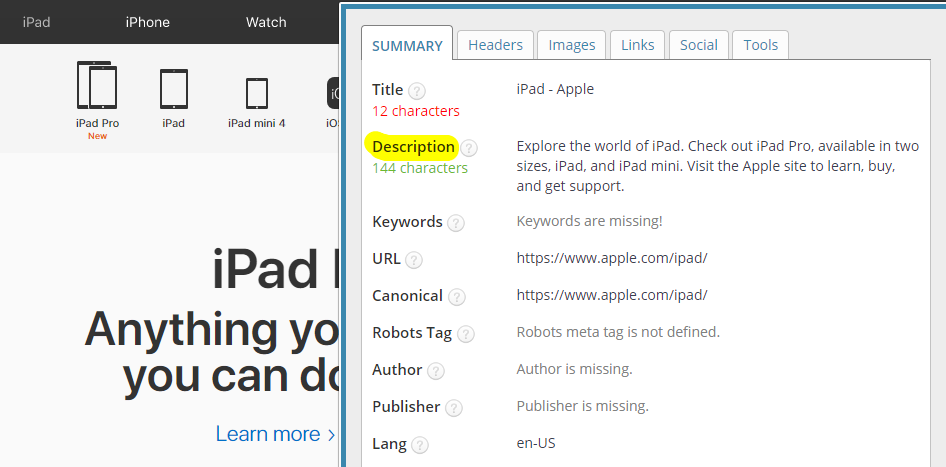
Here is how the snippet of this page looks in SERP. The description text nicely fits in here and gives us a preview of what you will be able to do/see on the page.

Image Optimization for SEO
Efficient image optimization is key in enhancing your website’s SEO. Start with descriptive file names that incorporate relevant keywords. This helps search engines understand the content of your image. Ensure to add alt text, which provides a text alternative for images and can improve accessibility while contributing to SEO.
Using the correct file format is crucial for maintaining image quality without excessively impacting load times. JPEGs are typically preferred for photographs, while PNGs suit images with transparent backgrounds or text. Compress images to reduce load times; tools like TinyPNG or ImageOptim can be effective without noticeable quality loss.
Image optimization not only aids search engine rankings but also enhances user experience, leading to better engagement.
Empty or missing title

Title is a ranking factor which means it directly affects how high a page is going to be in SERP. As Neil Patel wrote, “when it comes to low effort/big results, title tags take the cake. It’s such a small element but has such a massive impact!”.
Unusual article headings are great, but when it comes to title tag, first of all we need to show that the page is relevant to the query. Nobody want to waste time on clickbaits. So if possible, try to place your main keyword closer to the beginning of the title. But avoid keyword stuffing. It is a practise from ten years ago. According to Backlinko study, there is a very small relationship between title tag keyword optimization and ranking. So, whatever you decide to do with your title tag, think of the people in the first place.
A good title should be working as an advertising headline. It is where some creativity will stand in good stead.
If you include your brand name, include it at the very and separate with a dash. When it is visually separated, it is more likely that users will remember the word.
Some information from SEO META in 1 CLICK.
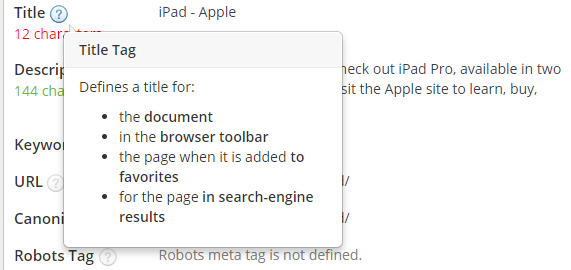
Duplicate Titles

To title 500 pages of you site ”Outside Sports” when your this is the actual name of your it is the worst thing you could possibly do. Google might find this suspicious. Plus more specific titles would help visitors to not get lost on your website. Unique titles prevent your pages from competing with each other and help avoid confusion among search engines.
Title Too Long

Although title tag is not seen on your HTML page, it appears in the first line of the search engine result page. Long titles will be cut down. Its length is only a recommendation to help you deliver the message to a potential visitor of your site.
Title Too Short

And again — everything about the titles’ length is up to you. Serpstat marks this as a middle priority mistake just to signal that you are not using the full potential of an important SEO tag.
Headings
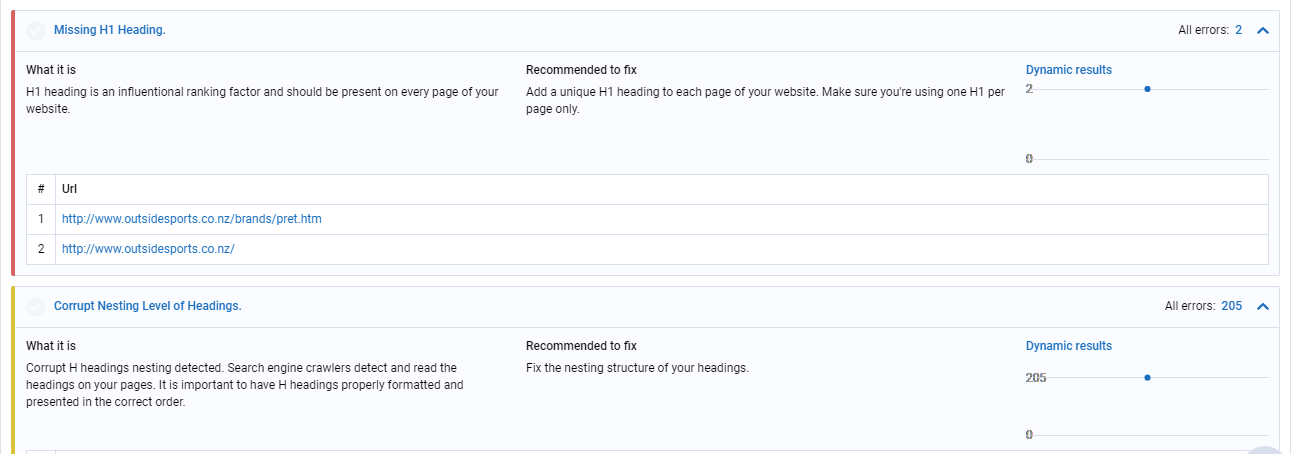
Google loves well-structured articles. If it is easy for user to navigate through large amounts of text on your site, page will rank higher. Make sure all of the headings properly represent the text’s contents.
It is also important not to duplicate your title tags between header tag.
Here’s an example from the same iPad page.
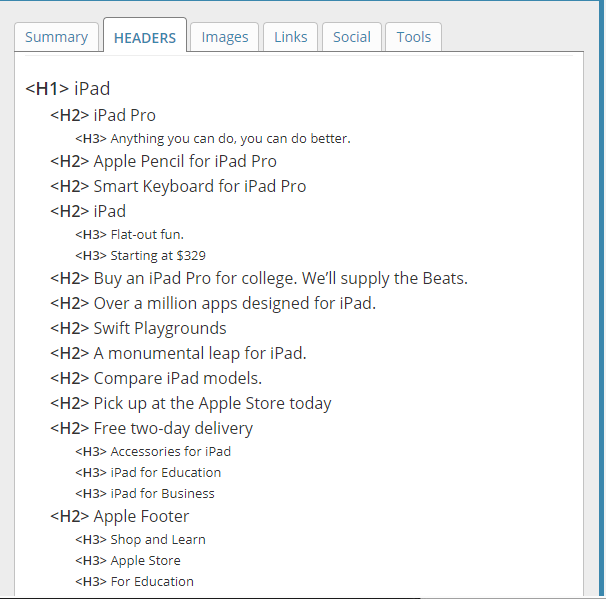
Optimizing Page Load Speed
Quick page load speed is more important than ever, affecting not just SEO but user retention. Google’s PageSpeed Insights tool can be used to measure your site’s performance and provide actionable recommendations.
Start by focusing on reducing your server response times and enabling compression through tools like Gzip. Minimize your CSS and JavaScript files, and consider asynchronous loading to prevent certain scripts from blocking page render.
Efficient caching strategies also improve load times for returning visitors. Regularly evaluate your site’s performance to ensure continued speed and efficiency. These optimizations are not just about speed but also about delivering a smoother browsing experience.
Indexation


The more pages of your site that can be found with search engines the better it is for your website (and you). There are cases when some pages need to be hidden from crawlers but make sure noindex tags were not placed, for example, on your lending or main pages by mistake.
Importance of SSL Certificates
Security is a priority for both search engines and users, making SSL certificates important for SEO. Secure websites that use HTTPS are favored in search rankings over those that don’t.
To check for and implement an SSL certificate, work with your hosting provider or use existing tools that can guide you through the setup process. This switch not only boosts rankings but also builds user trust, as users see their data is being protected during interactions.
SSL certificates, once installed, should be maintained and renewed to ensure your site remains secure and optimized for search rankings.
Don’t postpone SEO first aid! It`s only after a proper site audit that you can sleep soundly.
Just like a medical inspection, an SEO audit should be done regularly.
This guest post was written by Irene Dobik, a Content Marketer at Serpstat.

2 thoughts on “Guide to SEO First Aid: Errors to Fix Without a Specialist”